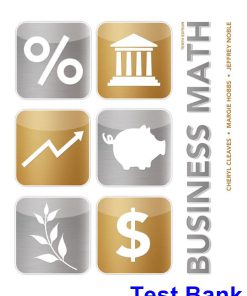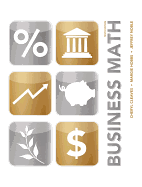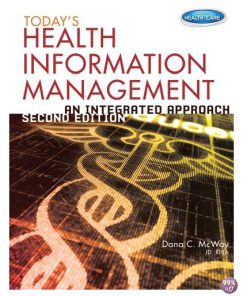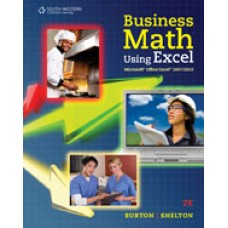Test Bank for MATH FOR BUSINESS AND FINANCE AN ALGEBRAIC APPROACH 2nd Edition by Slater
$35.00 Original price was: $35.00.$26.50Current price is: $26.50.
Test Bank for MATH FOR BUSINESS AND FINANCE AN ALGEBRAIC APPROACH 2nd Edition by Slater
This is completed downloadable of Test Bank for MATH FOR BUSINESS AND FINANCE AN ALGEBRAIC APPROACH 2nd Edition by Slater.
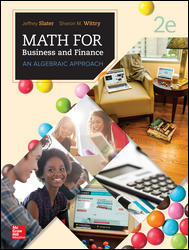
Instant download Test Bank for MATH FOR BUSINESS AND FINANCE AN ALGEBRAIC APPROACH 2nd Edition by Slater pdf docx epub after payment.
Product Details:
- ISBN-10 : 1259957586
- ISBN-13 : 978-1259957581
- Author: Slater; Wittry
Math for Business & Finance: An Algebraic Approach provides modern examples for students to understand business mathematics and make connections with real-world applications. The course covers mathematical concepts from an algebraic approach, combined with Business applications. Every chapter is devoted to a Personal Finance theme, with topics that include Payroll and the Cost of Purchasing a Home. There is also extensive integration of scientific calculator notation, and also has the Wall Street Journal and Kiplinger news clips that have been widely popular in Jeffrey Slater’s other two Business Math texts. Connect is the only integrated learning system that empowers students by continuously adapting to deliver precisely what they need, when they need it, and how they need it, so that your class time is more engaging and effective.
Table Of Contents:
- Contents
- Chapter 1: Problem Solving with Math
- LU 1–1: Reading, Writing, and Rounding Numbers
- LU 1–2: Performing Basic Math Functions with Whole Numbers
- LU 1–3: Performing Basic Math Functions with Decimals
- Chapter 2: Fractions
- LU 2-1: Types of Fractions and Conversion Procedures
- LU 2–2: Fraction and Decimal Conversions
- LU 2–3: Basic Math Functions with Fractions
- Chapter 3: Percents and Their Applications
- LU 3–1: Conversions
- LU 3–2: Application of Percents-Portion Formula
- Video Case: Project Management at Six Flags, New Jersey
- Chapter 4: Solving for the Unknown
- LU 4–1: Solving Equations for the Unknown
- LU 4–2: Solving Word Problems for the Unknown
- LU 4–3: Ratios and Proportions
- Chapter 5: Business Statistics
- LU 5–1: Frequency Distributions and Graphs
- LU 5–2: Mean, Median, and Mode
- LU 5–3: Measures of Dispersion
- Chapter 6: Banking and Budgeting
- LU 6-1: The Checking Account
- LU 6-2: Bank Statement and Reconciliation Process; Latest Trends in Mobile Banking
- LU 6-3: The Budgeting Process
- Chapter 7: Payroll and Income Tax
- LU 7-1: Calculating Various Types of Employees’ Gross Pay
- LU 7–2: Computing Payroll Deductions for Employees’ Pay; Employers’ Responsibilities
- LU 7-3: Calculating Taxable Income and Tax Liability
- Chapter 8: Sales, Excise, and Property Taxes
- LU 8-1: Sales and Excise Taxes
- LU 8-2: Property Tax
- Video Case: EDP Renewables
- Chapter 9: Risk Management
- LU 9-1: Life Insurance
- LU 9-2: Fire Insurance
- LU 9-3: Auto Insurance
- Chapter 10: Installment Buying and Revolving Charge Credit Cards
- LU 10-1: Cost of Installment Buying
- LU 10-2: Revolving Charge Credit Cards
- Chapter 11: Discounts: Trade and Cash
- LU 11-1: Trade Discounts—Single and Chain (Includes Discussion of Freight)
- LU 11-2: Cash Discounts, Credit Terms, and Partial Payments
- Video Case: Recycling at Subaru of Indiana Automotive
- Chapter 12: Markups and Markdowns: Perishables and Breakeven Analysis
- LU 12-1: Markups Based on Cost (100%)
- LU 12-2: Markups Based on Selling Price (100%)
- LU 12-3: Markdowns and Perishables
- LU 12-4: Breakeven Analysis
- Video Case: Noodles & Company
- Chapter 13: How to Read, Analyze, and Interpret Financial Reports
- LU 13–1: Balance Sheet—Report as of a Particular Date
- LU 13–2: Income Statement—Report for a Specific Period of Time
- LU 13–3: Trend and Ratio Analysis
- Video Case: Buycostumes.com
- Chapter 14: Depreciation
- LU 14–1: Concept of Depreciation and the Straight-Line MethodCompanies
- LU 14–2: Units-of-Production Method
- LU 14–3: Declining-Balance Method
- LU 14–4: Modified Accelerated Cost Recovery System (MACRS) with Introduction to ACRS (1986, 1989, 2010)
- Chapter 15: Inventory and Overhead
- LU 15-1: Assigning Costs to Ending Inventory-Specific Identification; Weighted Average; FIFO; LIFO
- LU 15–2: Retail Method; Gross Profit Method; Inventory Turnover; Distribution of Overhead
- Chapter 16: Simple Interest
- LU 16-1: Calculation of Simple Interest and Maturity Value
- LU 16-2: Finding Unknown in Simple Interest Formula This
- LU 16-3: U.S. Rule-Making Partial Note Payments before Due Date
- Chapter 17: Promissory Notes, Simple Discount Notes, and the Discount Process
- LU 17–1: Structure of Promissory Notes; the Simple Discount Note
- LU 17-2: Finding the Principal, Rate, and Time for a Simple Interest Note and a Simple Discount Note
- LU 17–3: Discounting (Selling) an Interest-Bearing Note before Maturity
- Chapter 18: The Cost of Home Ownership
- LU 18–1: Types of Mortgages and the Monthly Mortgage Payment
- LU 18–2: Amortization Schedule—Breaking Down the Monthly Payment
- Chapter 19: Compound Interest and Present Value
- LU 19–1: Compound Interest (Future Value)—The Big Picture
- LU 19–2: Present Value—The Big Picture
- Chapter 20: Annuities and Sinking Funds
- LU 20–1: Annuities: Ordinary Annuity and Annuity Due (Find Future Value)
- LU 20–2: Present Value of an Ordinary Annuity (Find Present Value)
- LU 20–3: Sinking Funds (Find Periodic Payments)
- Video Case: DHL Global Delivery
- Cumulative Review: A Word Problem Approach
- Chapter 21: Stocks, Bonds, and Mutual Funds
- LU 21–1: Stocks
- LU 21–2: Bonds
- LU 21–3: Mutual Funds
- LU 21–4: Distribution of Profits and Losses in a Partnership
- Appendix A: Additional Homework by Learning Unit
- Appendix B: Worked-Out Solutions to Extra Practice Quizzes and You Try It Problems
- Appendix C: Check Figures
- Appendix D: Calculator Basics and the Metric System
- Glossary/Index
- Key Formulas
People also search:
math for business and finance an algebraic approach 2nd edition
You may also like…
Solution Manual
Test Bank
Test Bank for Todays Health Information Management An Integrated Approach 2nd Edition by McWay
Solution Manual








